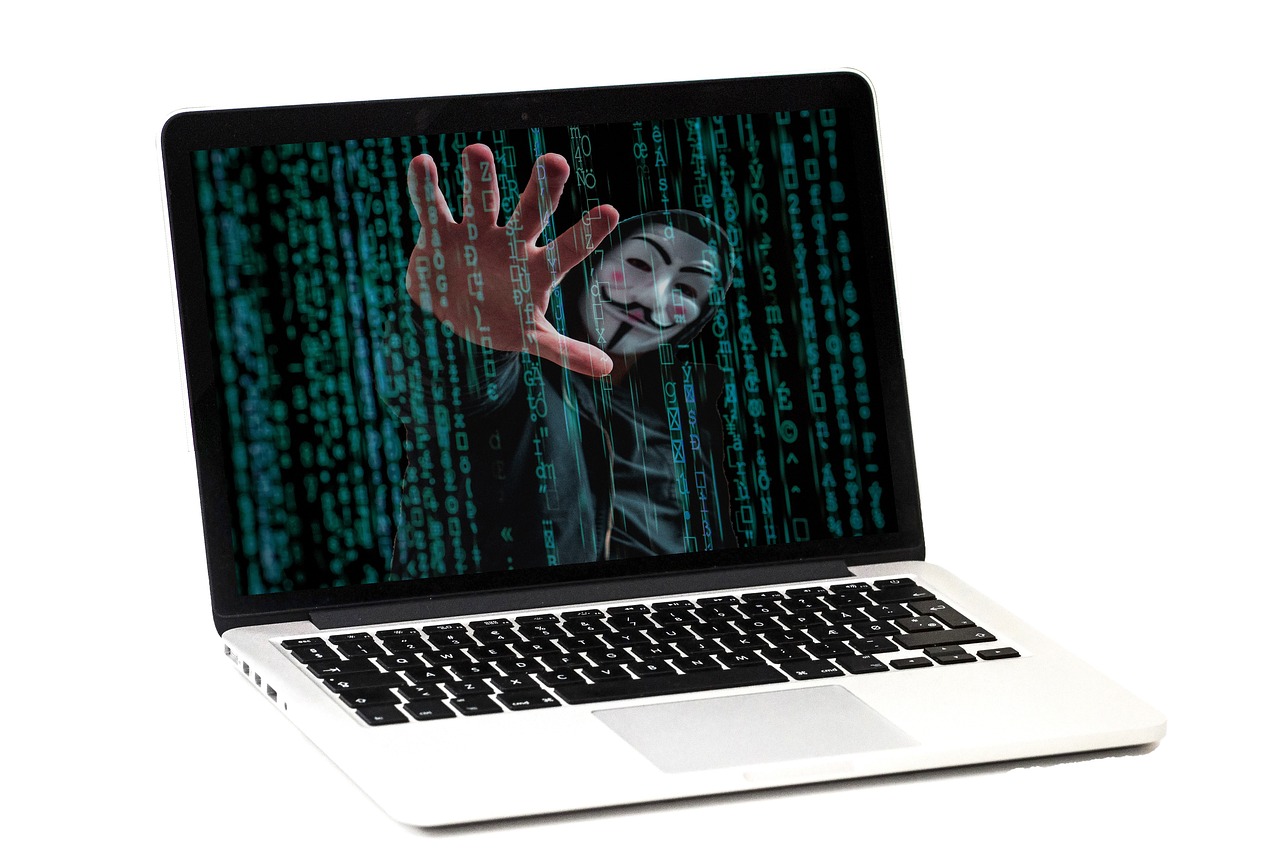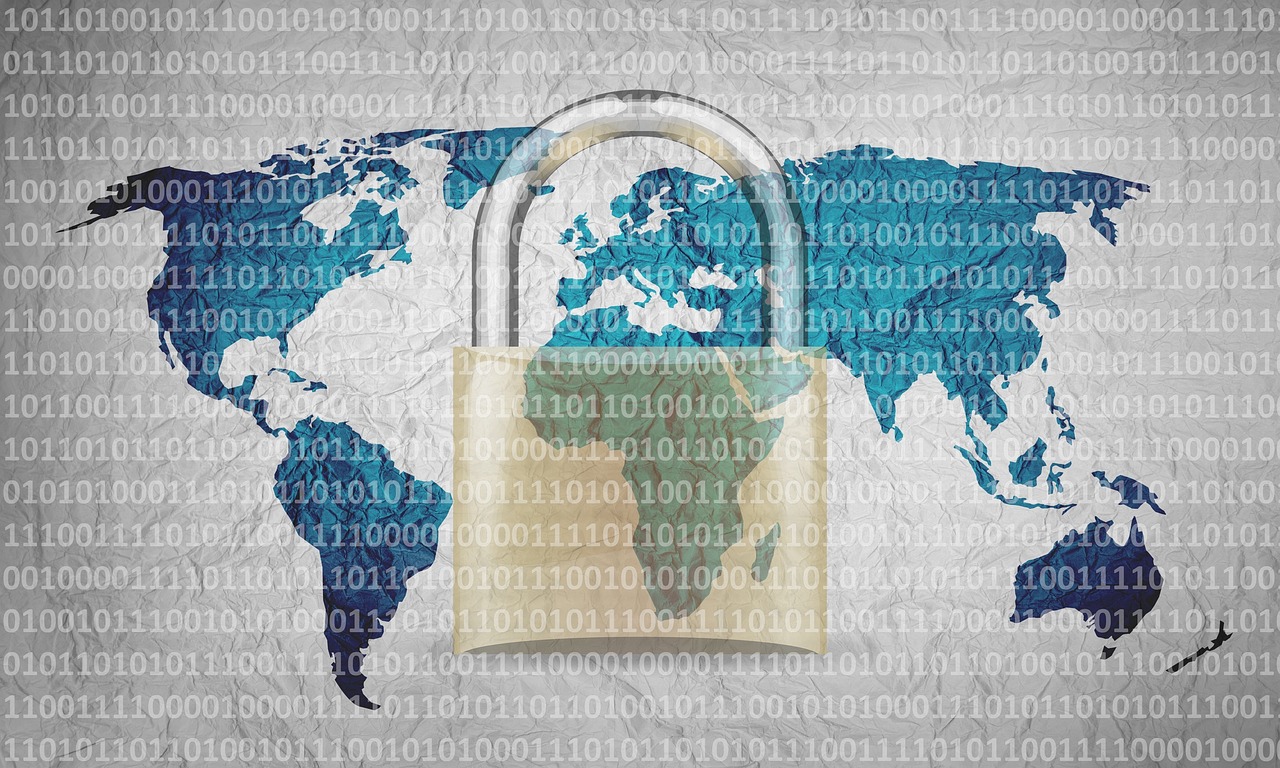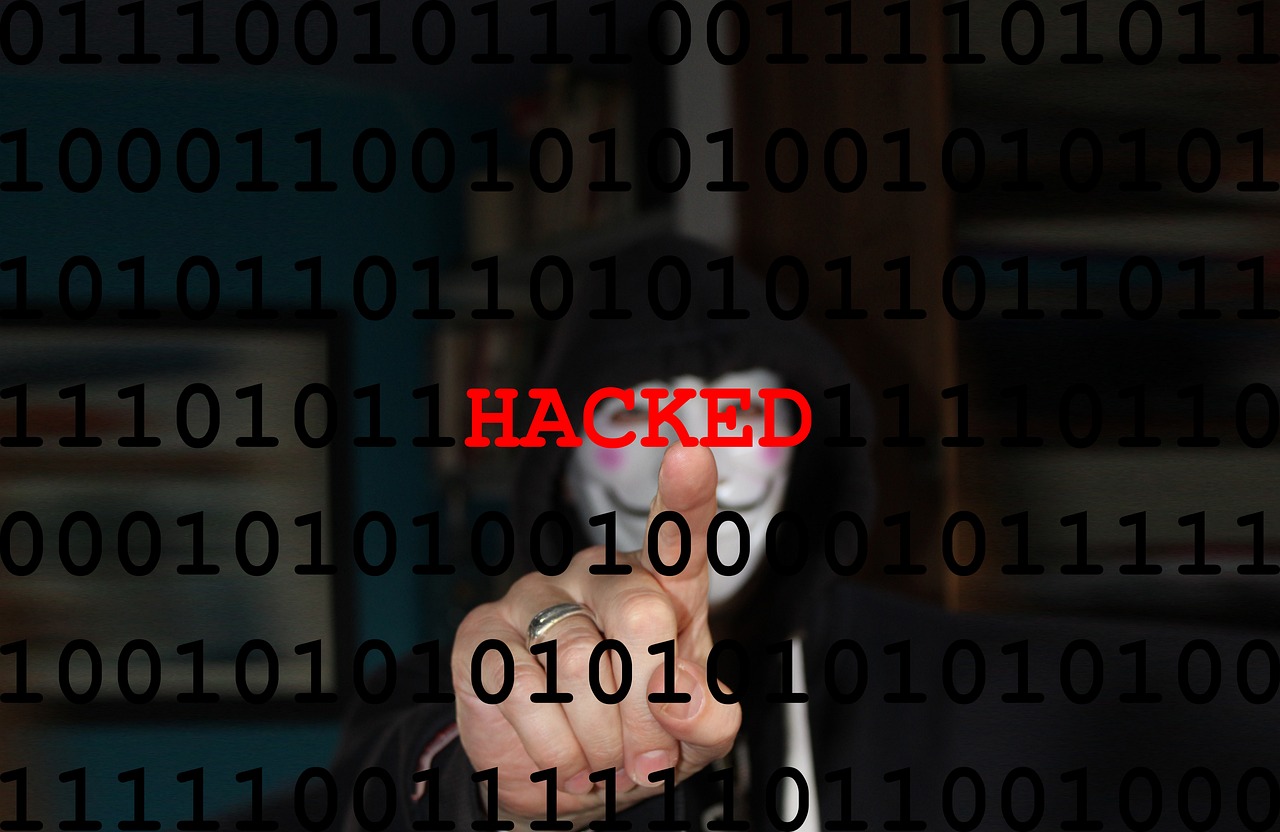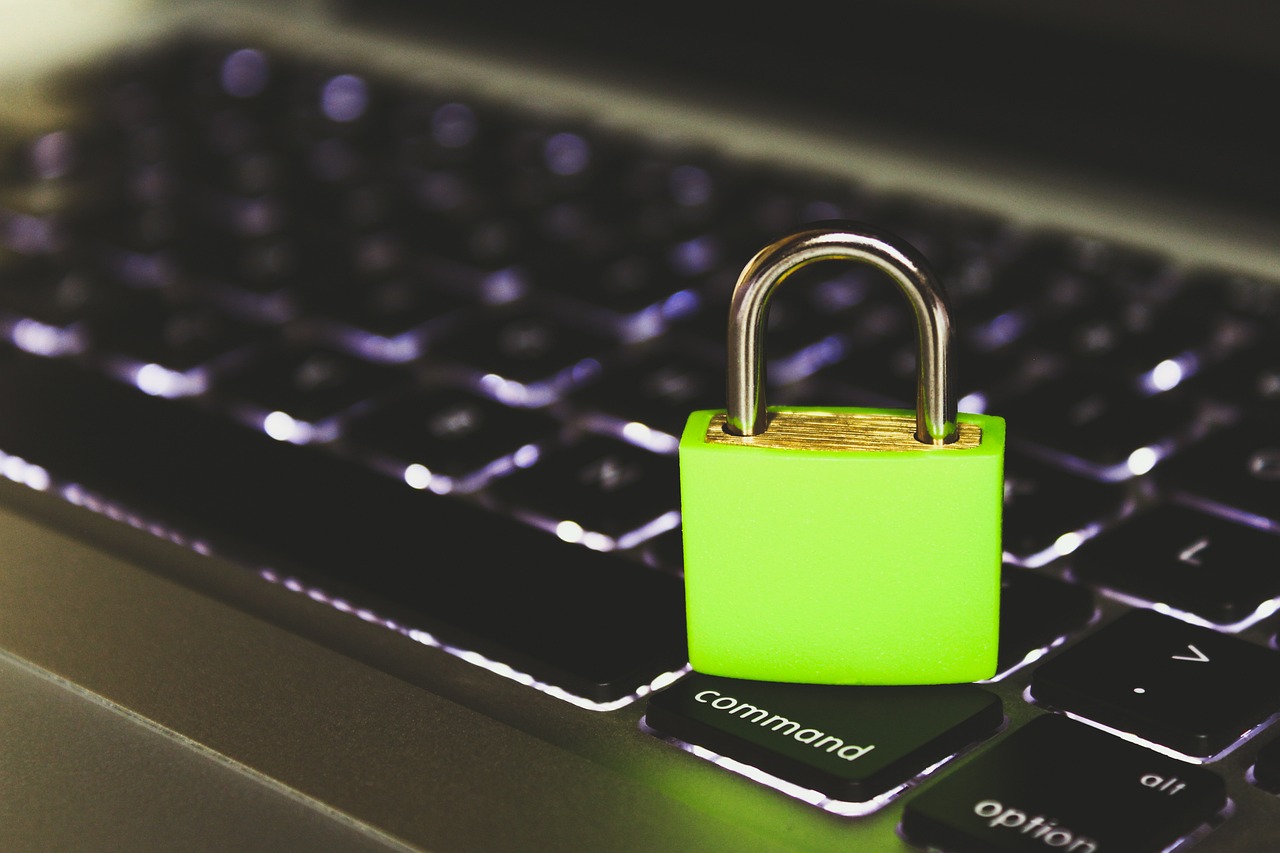Preventing Cyber Harassment on Social Media
In today's digital age, social media platforms have become a double-edged sword. While they connect us with friends, family, and the world at large, they can also be breeding grounds for negativity and hostility. Cyber harassment is a pervasive issue that can leave lasting emotional scars on its victims. It’s essential to understand not just the implications of this behavior, but also how we can actively work to prevent it. This article delves into effective strategies to combat cyber harassment, highlighting preventative measures, legal implications, and the importance of community awareness in fostering a safer online environment.
Cyber harassment encompasses a range of harmful behaviors online, including bullying, stalking, and intimidation. It can occur through various mediums such as social media posts, direct messages, or even comments on blogs and forums. Recognizing its forms is crucial for individuals and communities to develop effective strategies for prevention and support for victims. The anonymity of the internet often emboldens harassers, making it easier for them to inflict pain without facing immediate consequences. This is where understanding the different types of cyber harassment becomes vital:
- Bullying: Repeated aggressive behavior intended to hurt another individual.
- Stalking: Persistent and unwanted attention that causes fear or distress.
- Intimidation: Using threats or aggressive behavior to instill fear in others.
By identifying these behaviors, we can better equip ourselves to address them and support those affected.
Various laws exist to protect individuals from cyber harassment, but navigating these legal frameworks can often feel overwhelming. Understanding these laws helps victims seek justice and encourages platforms to implement stronger policies against abusive behavior. For instance, many countries have enacted laws that specifically target online harassment, allowing victims to file reports and seek legal action against their harassers. Knowing your rights is the first step in fighting back. This knowledge not only empowers victims but also serves as a deterrent for potential harassers.
Most social media platforms offer reporting tools for users to flag harassment. Familiarizing oneself with these mechanisms is essential for effectively addressing incidents and holding perpetrators accountable. Each platform has its own set of rules and reporting procedures, which can often be found in the help or support sections. Here’s a quick snapshot of common platforms:
| Platform | Reporting Tool |
|---|---|
| Report Post/Message | |
| Report Tweet/Account | |
| Report Post/Story |
Knowing how to report incidents can significantly reduce the impact of harassment and help build a safer online community.
Building a positive online community can deter cyber harassment. Encouraging respectful interactions and supporting victims fosters an environment where harmful behavior is less tolerated and more swiftly addressed. It’s about creating a culture of empathy and understanding, where community members feel empowered to speak out against harassment. When we collectively reject abusive behavior, we contribute to a more supportive online space.
Educational initiatives can raise awareness about cyber harassment, its effects, and prevention strategies. Schools and organizations play a vital role in equipping individuals with the knowledge to combat online abuse. Workshops, seminars, and online resources can provide valuable insights into recognizing and addressing cyber harassment. The more informed we are, the better prepared we will be to tackle this issue head-on.
Bystanders can play a crucial role in preventing cyber harassment. It’s not just the responsibility of the victim to report or confront the harasser. Encouraging bystanders to intervene safely and report incidents can significantly reduce the prevalence of online abuse. Simple actions, like speaking up in a comment thread or reporting a harmful post, can make a big difference in someone’s life.
Understanding and utilizing privacy settings on social media can help users protect themselves from unwanted interactions. This proactive approach is essential for maintaining personal safety online. Adjusting your settings to control who can see your posts, comment on your content, or send you messages can create a more secure online experience. Remember, your online presence is yours to control!
Numerous resources are available to support victims of cyber harassment, including hotlines, counseling services, and legal aid. Accessing these resources can provide crucial assistance for those affected. Organizations dedicated to supporting victims can offer guidance, emotional support, and legal advice, helping individuals navigate the often-tumultuous waters of cyber harassment.
As technology evolves, so do the methods of cyber harassment. Staying informed about emerging trends and prevention techniques is vital for individuals and organizations committed to creating safer online spaces. The future may bring new tools and strategies to combat harassment, but it will also require a collective effort from all of us to adapt and respond to these challenges.
Q: What should I do if I am being harassed online?
A: Document the harassment, report it to the platform, and seek support from friends, family, or professionals.
Q: Can I remain anonymous while reporting harassment?
A: Yes, most platforms allow you to report incidents anonymously.
Q: What are the signs of cyber harassment?
A: Signs include repeated unwanted messages, threats, or attempts to control or intimidate you.
Q: How can I support someone who is a victim of cyber harassment?
A: Listen to them, offer emotional support, help them document the harassment, and encourage them to report it.

Understanding Cyber Harassment
This article explores effective strategies to combat cyber harassment on social media platforms, highlighting preventative measures, legal implications, and the importance of community awareness in fostering a safer online environment.
Cyber harassment is a term that encompasses a range of harmful behaviors that occur online. It can manifest in various forms, such as bullying, stalking, and intimidation. Imagine walking into a room full of people, only to be bombarded with insults and threats from every corner. That's what victims of cyber harassment often feel when they log into their social media accounts. It's crucial for individuals and communities to recognize these behaviors and understand their implications. By identifying the different forms of cyber harassment, we can better equip ourselves to combat it.
One of the most common types of cyber harassment is online bullying. This can include sending threatening messages, spreading false rumors, or sharing embarrassing photos without consent. It's like being in a never-ending nightmare where your tormentors have the power to reach you anytime, anywhere. Another form is cyberstalking, where an individual obsessively tracks another person's online activities, leading to feelings of fear and anxiety. This behavior can escalate quickly, making it imperative for victims to seek help.
Furthermore, intimidation tactics can also be employed online, where individuals use fear to control or manipulate others. This might involve aggressive comments, doxxing (revealing personal information), or even threats of violence. The anonymity provided by the internet often emboldens perpetrators, making them feel invincible. Thus, understanding these behaviors is not just about recognizing them; it's about fostering a culture of awareness and support for those affected.
To illustrate the various forms of cyber harassment, consider the following table:
| Type of Cyber Harassment | Description |
|---|---|
| Online Bullying | Sending threatening messages or spreading rumors. |
| Cyberstalking | Obsessively tracking someone's online activities. |
| Intimidation | Using fear tactics to control or manipulate others. |
Recognizing these behaviors is the first step toward developing effective strategies for prevention and support for victims. It's essential to create an environment where individuals feel safe to report these incidents without fear of retaliation or disbelief. By fostering this kind of community, we can help mitigate the impact of cyber harassment and encourage a more respectful online culture.
Various laws exist to protect individuals from cyber harassment. Understanding these legal frameworks helps victims seek justice and encourages platforms to implement stronger policies against abusive behavior.
Most social media platforms offer reporting tools for users to flag harassment. Familiarizing oneself with these mechanisms is essential for effectively addressing incidents and holding perpetrators accountable.
Building a positive online community can deter cyber harassment. Encouraging respectful interactions and supporting victims fosters an environment where harmful behavior is less tolerated and more swiftly addressed.
Educational initiatives can raise awareness about cyber harassment, its effects, and prevention strategies. Schools and organizations play a vital role in equipping individuals with the knowledge to combat online abuse.
Bystanders can play a crucial role in preventing cyber harassment. Encouraging them to intervene safely and report incidents can significantly reduce the prevalence of online abuse.
Understanding and utilizing privacy settings on social media can help users protect themselves from unwanted interactions. This proactive approach is essential for maintaining personal safety online.
Numerous resources are available to support victims of cyber harassment, including hotlines, counseling services, and legal aid. Accessing these resources can provide crucial assistance for those affected.
As technology evolves, so do the methods of cyber harassment. Staying informed about emerging trends and prevention techniques is vital for individuals and organizations committed to creating safer online spaces.
- What is cyber harassment? Cyber harassment refers to harmful behaviors conducted online, including bullying, stalking, and intimidation.
- How can I report cyber harassment? Most social media platforms have built-in reporting tools that allow users to flag abusive behavior.
- What resources are available for victims? Victims can access hotlines, counseling services, and legal aid to receive support.
- How can I protect myself from cyber harassment? Utilizing privacy settings and being aware of your online presence can help safeguard against unwanted interactions.

Legal Frameworks and Protections
When we think about the online world, it's easy to forget that there are laws designed to protect us from the darker sides of social media, like cyber harassment. Just as we have laws in the physical world to keep us safe, the digital landscape is governed by various legal frameworks aimed at shielding individuals from harmful behaviors. Understanding these laws is crucial for anyone who has experienced harassment online, as they provide a pathway to seek justice and hold perpetrators accountable.
In many countries, cyber harassment is classified under existing laws related to harassment, stalking, and defamation. For instance, in the United States, laws vary from state to state, but many states have enacted anti-bullying laws that extend to online behavior. These laws often outline specific actions that constitute harassment, such as repeated unwanted contact, threats, or the dissemination of private information without consent. Knowing what qualifies as harassment can empower victims to take action.
Additionally, the Communications Decency Act (CDA) in the U.S. provides some protections for social media platforms, shielding them from liability for user-generated content. However, this doesn't mean that platforms are off the hook entirely. Many have adopted their own community guidelines and policies that prohibit harassment and provide mechanisms for reporting abusive behavior. For example, platforms like Facebook, Twitter, and Instagram have made significant strides in creating robust reporting systems that allow users to flag inappropriate content quickly.
On an international level, various treaties and agreements emphasize the need for countries to implement laws that address cyber harassment. The European Union’s General Data Protection Regulation (GDPR) not only protects personal data but also empowers users to control their information online, thus reducing the risk of harassment stemming from data misuse. Such legal frameworks highlight the importance of collaboration between governments and technology companies to foster a safer online environment.
Here’s a quick overview of some key legal protections against cyber harassment:
| Country | Legal Framework | Key Features |
|---|---|---|
| United States | State Anti-Bullying Laws | Varied by state; often includes protections against online harassment. |
| United Kingdom | Malicious Communications Act | Criminalizes sending harmful messages via electronic means. |
| Australia | Criminal Code Act | Includes provisions against stalking and harassment online. |
| European Union | General Data Protection Regulation (GDPR) | Empowers users with control over their personal data, reducing harassment risks. |
In addition to understanding these laws, it's essential for victims to know how to navigate the legal landscape effectively. Seeking legal advice can be a vital step in understanding one’s rights and options. Many organizations and legal aid services offer support specifically for victims of cyber harassment, helping them understand how to file complaints, gather evidence, and pursue legal action if necessary.
Ultimately, while legal frameworks are in place to protect individuals from cyber harassment, the responsibility also lies with social media platforms to enforce their policies rigorously. By holding users accountable for their actions and providing a safe space for victims to speak out, we can create a digital world where everyone feels secure and respected.
Q: What should I do if I am a victim of cyber harassment?
A: First, document all instances of harassment, including screenshots and timestamps. Report the behavior to the social media platform and consider seeking legal advice.
Q: Are there any laws specifically targeting cyber harassment?
A: Yes, many countries have laws that address online harassment, often falling under broader harassment or stalking statutes.
Q: Can I remain anonymous while reporting harassment?
A: Most platforms allow users to report harassment anonymously, but it’s essential to check the specific reporting guidelines of each platform.
Q: What resources are available for victims of cyber harassment?
A: Numerous organizations provide support, including hotlines, counseling services, and legal aid specifically for victims of cyber harassment.

Reporting Mechanisms on Social Media
In today's digital age, social media platforms serve as essential tools for communication, connection, and expression. However, they can also become breeding grounds for cyber harassment. To combat this issue effectively, it is crucial for users to understand the various reporting mechanisms available on these platforms. Most social media sites, such as Facebook, Twitter, Instagram, and TikTok, have implemented user-friendly features that allow individuals to report abusive behavior swiftly. But how do these mechanisms work, and why are they important?
When you encounter harassment online, the first step is to recognize the type of abuse you're facing. This could range from offensive comments and threats to stalking and impersonation. Each platform typically categorizes these behaviors, making it easier for users to select the appropriate reason when filing a report. For instance, Facebook allows users to report posts, comments, and messages that violate their community standards. Similarly, Twitter has a straightforward reporting process for tweets and accounts that engage in harmful behavior.
Here's a quick overview of how to report incidents across popular social media platforms:
| Platform | Reporting Method | Response Time |
|---|---|---|
| Click on the three dots next to a post or comment, select "Find Support or Report," and follow the prompts. | Usually within 24 hours | |
| Click on the down arrow on a tweet, select "Report Tweet," and choose the reason for reporting. | Varies, but often within a few hours | |
| Tap the three dots above a post or comment, select "Report," and follow the instructions. | Typically within 24 hours | |
| TikTok | Tap the arrow icon on a video, select "Report," and choose the appropriate issue. | Generally within 48 hours |
Understanding these reporting mechanisms empowers users to take action against harassment. It's not just about reporting; it's about holding perpetrators accountable. But remember, reporting is just one part of the solution. The effectiveness of these mechanisms relies heavily on community awareness and the willingness of users to stand up against abusive behavior. When more individuals report incidents, social media platforms are encouraged to take stricter actions against violators, ultimately fostering a safer online environment.
Moreover, users should also be aware of the importance of documenting incidents before reporting. Taking screenshots and saving messages can serve as valuable evidence if the situation escalates. This documentation can be crucial not only for the platform's review process but also for any potential legal action that may arise.
In conclusion, while social media can sometimes feel like a wild west of opinions and interactions, knowing how to navigate its reporting mechanisms equips users with the tools necessary to combat cyber harassment effectively. By being proactive and aware, we can collectively contribute to a more respectful and safer online community.
- What should I do if I feel unsafe after reporting? If you feel threatened, it's essential to reach out to local authorities or trusted individuals in your life. Your safety is the top priority.
- Can I report someone anonymously? Yes, most platforms allow you to report without revealing your identity. However, keep in mind that providing your information can sometimes help in the investigation.
- What happens after I report someone? The platform will review the report and determine if the content violates their community standards. You may or may not receive feedback on the outcome.

Creating a Supportive Online Community
In today's digital age, the importance of fostering a supportive online community cannot be overstated. With the rise of social media, we have the power to connect with others like never before. However, this connectivity also brings about challenges, particularly in the form of cyber harassment. So, how can we create an environment that not only discourages harmful behaviors but also uplifts and supports individuals? The answer lies in collective action and a commitment to respect and kindness.
First and foremost, it starts with encouraging respectful interactions. Every user has a role to play in shaping the tone of online conversations. By modeling positive behavior, such as using inclusive language and showing empathy towards others, we can set a precedent for how we expect to be treated. When community members actively promote kindness, it creates a ripple effect, inspiring others to follow suit.
Moreover, supporting victims of cyber harassment is crucial. When someone comes forward to share their experience, it's essential to listen and validate their feelings. This support can take many forms, from offering a listening ear to providing resources for reporting harassment. By standing in solidarity with victims, we foster a culture where harmful behavior is not tolerated and where individuals feel safe to express themselves without fear of retaliation.
Another vital aspect is the establishment of clear community guidelines. Social media platforms and online forums should have well-defined rules that outline what constitutes unacceptable behavior. These guidelines should be easily accessible and enforced consistently. When community members know the boundaries, it becomes easier to identify and report harassment. Additionally, platforms should implement robust moderation systems to ensure these guidelines are upheld, creating a safer space for everyone.
To further enhance community support, we can leverage the power of peer support networks. These networks can be formal or informal groups where individuals come together to share their experiences and strategies for coping with online abuse. By creating spaces where people can connect and learn from one another, we empower individuals to take action against harassment. It's like building a virtual safety net—when one person stumbles, others are there to catch them.
In addition to peer support, educational initiatives play a pivotal role in cultivating a supportive online community. Schools, organizations, and even social media platforms can implement training programs that educate users about the impacts of cyber harassment and the importance of standing up against it. By raising awareness, we equip individuals with the knowledge and tools necessary to combat online abuse effectively.
Ultimately, creating a supportive online community is a shared responsibility. It requires active participation from everyone involved, whether they are users, platform administrators, or educators. By working together, we can build a digital environment that not only discourages cyber harassment but also celebrates diversity, inclusion, and kindness. So, let's take a stand and make our online spaces a haven for positivity and support.
- What is a supportive online community?
A supportive online community is a group of individuals who engage respectfully and positively, creating an environment that discourages harassment and uplifts its members. - How can I contribute to a supportive online community?
You can contribute by modeling positive behavior, supporting victims, adhering to community guidelines, and participating in educational initiatives. - What should I do if I witness cyber harassment?
If you witness cyber harassment, report the behavior to the platform, support the victim, and, if safe, intervene to discourage the harasser.

Educational Campaigns and Awareness
In today's digital age, educational campaigns are essential in raising awareness about the pervasive issue of cyber harassment. These initiatives serve not only to inform individuals about the various forms of online abuse but also to equip them with the tools necessary for prevention and intervention. Imagine walking into a room where everyone is aware of the dangers lurking in the shadows of social media; that’s the power of education. By fostering an informed community, we can significantly reduce the incidence of harassment.
Schools, community organizations, and even social media platforms themselves have a crucial role to play in these educational efforts. For instance, workshops and seminars can be organized to discuss the implications of cyber harassment, highlighting real-life scenarios and encouraging open dialogue. These discussions can be enriched by incorporating personal stories from victims, which can evoke empathy and understanding among peers. When individuals hear firsthand accounts of the pain caused by cyber harassment, it becomes more than just a statistic; it becomes a call to action.
Moreover, utilizing various media channels to spread awareness is vital. Social media campaigns, informative videos, and interactive webinars can reach a broader audience, making the message more accessible. For example, a campaign could employ eye-catching graphics and compelling narratives to illustrate the consequences of cyber harassment, prompting viewers to reflect on their online behavior. The more people are aware of the signs of harassment and the importance of reporting it, the more equipped they are to combat it.
To further enhance these campaigns, educational institutions should consider integrating cyber safety into their curriculums. Teaching students about the importance of digital citizenship, empathy, and respect online can create a generation that values kindness over cruelty. Here are some key topics that could be included:
- The definition and forms of cyber harassment
- How to recognize signs of harassment
- Steps to take if you or someone you know is being harassed
- The importance of reporting incidents
- Resources available for victims
In addition to institutional efforts, community-led initiatives can also make a significant impact. Local groups can organize events that not only educate but also empower individuals to stand against harassment. For instance, community forums can be held where participants share their experiences and strategies for support. This grassroots approach fosters a sense of solidarity among community members, reinforcing the idea that they are not alone in this fight.
Finally, it's crucial to evaluate the effectiveness of these educational campaigns continually. Gathering feedback from participants can help organizations refine their approaches and ensure that their messages resonate with the audience. By adapting to the changing landscape of social media and the evolving tactics of cyber harassers, these initiatives can remain relevant and impactful.
In conclusion, educational campaigns and awareness initiatives are vital in combating cyber harassment. By fostering a culture of understanding, empathy, and proactive intervention, we can create a safer online environment for everyone. Remember, knowledge is power, and when we empower individuals with the right information, we pave the way for a more respectful and inclusive digital community.
Q: What are the signs of cyber harassment?
A: Signs of cyber harassment include receiving threatening messages, being targeted with negative comments, or experiencing unwanted contact from someone online.
Q: How can I report cyber harassment?
A: Most social media platforms have reporting tools that allow users to flag abusive behavior. Familiarize yourself with these tools to take action when needed.
Q: Are there resources available for victims of cyber harassment?
A: Yes, there are numerous resources available, including hotlines, counseling services, and legal aid to support victims of cyber harassment.

Empowering Bystanders to Act
When we think about cyber harassment, it's easy to focus solely on the victims and the perpetrators, but there's a powerful group that often gets overlooked: the bystanders. These are the individuals who witness online harassment, and their role is crucial in creating a safer digital environment. Imagine a crowded room where someone is being bullied; if everyone stands by in silence, the behavior is likely to continue unchecked. However, if just one person steps up to intervene, it can shift the entire dynamic. The same principle applies online.
Empowering bystanders to take action against cyber harassment involves educating them on how to respond effectively and safely. Many people may feel unsure about what to do when they witness harassment, fearing that their intervention could make the situation worse. That's why it's essential to provide clear guidelines on how to act. Here are some key strategies:
- Recognize the Signs: Bystanders should be trained to identify various forms of cyber harassment, such as bullying, shaming, and trolling. Understanding these behaviors is the first step in knowing when to intervene.
- Assess the Situation: Before taking action, it's important to evaluate the context. Is the harassment severe? Are there threats involved? Knowing when to intervene and when to seek help is crucial.
- Intervene Safely: Bystanders can intervene in several ways, such as calling out the behavior, offering support to the victim, or reporting the incident to the platform. However, they should always prioritize their safety and the safety of others.
- Support the Victim: After witnessing harassment, offering support to the victim can make a significant difference. A simple message of solidarity can help them feel less alone in their experience.
Moreover, it's vital to foster a culture where bystanders feel empowered to act. This can be achieved through community initiatives and educational campaigns that emphasize the importance of standing up against online abuse. Just like in a neighborhood where everyone looks out for each other, a supportive online community can deter harassment and encourage respectful interactions.
To further facilitate this empowerment, organizations and educational institutions can implement training programs that focus on digital citizenship and bystander intervention. These programs can equip individuals with the skills and confidence they need to take action when they see harassment occurring. For example, workshops could include role-playing scenarios where participants can practice their responses in a safe environment.
As technology continues to evolve and online platforms grow, the need for active bystanders becomes even more critical. By creating a robust support system that encourages individuals to speak out against cyber harassment, we can cultivate an online atmosphere where respect and kindness reign supreme. Remember, every action counts, and even the smallest gesture can lead to significant change. So, let’s empower those who witness harassment to step up and make a difference!
Q1: What should I do if I witness cyber harassment?
A1: If you see harassment happening, assess the situation and decide whether it's safe to intervene. You can call out the behavior, support the victim, or report the incident to the platform.
Q2: Can bystanders make a difference in preventing cyber harassment?
A2: Absolutely! Bystanders play a crucial role in stopping harassment. Their intervention can discourage perpetrators and provide support to victims, fostering a safer online environment.
Q3: How can I educate myself on recognizing cyber harassment?
A3: You can educate yourself by participating in workshops, reading articles on digital citizenship, and staying informed about the various forms of online abuse.

Utilizing Privacy Settings Effectively
In today's digital age, understanding and utilizing privacy settings on social media platforms is more crucial than ever. With the rise of cyber harassment, these settings serve as your first line of defense against unwanted interactions and potential threats. Imagine your online presence as your home; just as you would lock your doors and close your windows to keep intruders out, effective privacy settings help you control who can access your personal information and interact with you.
Many users overlook the importance of these settings, often leaving their profiles wide open for anyone to see. This can lead to unwanted messages, harassment, and even stalking. To help you navigate this complex landscape, let’s break down some essential privacy features available on popular social media platforms:
| Social Media Platform | Key Privacy Features |
|---|---|
|
|
|
|
|
By taking the time to familiarize yourself with these privacy features, you can significantly enhance your online safety. For instance, setting your profile to private on Instagram means that only approved followers can see your posts, which can dramatically reduce the chances of receiving unsolicited messages or harassment. Similarly, on Twitter, protecting your tweets allows you to control who can view your content, giving you peace of mind.
Another critical aspect of utilizing privacy settings effectively is being proactive about your connections. Regularly reviewing your friend or follower lists can help you identify and remove individuals who may not have your best interests at heart. Remember, it’s perfectly okay to curate your online community to ensure it remains positive and supportive.
Moreover, it’s essential to stay updated about any changes to privacy policies or settings on the platforms you use. Social media companies often roll out new features or adjust existing ones, and being aware of these changes can help you maintain your desired level of privacy. If you ever feel overwhelmed by the options available, consider reaching out to trusted friends or family members for guidance.
In conclusion, utilizing privacy settings effectively is not just about protecting yourself from cyber harassment; it’s about taking control of your online presence. By actively managing who can see your information and interact with you, you create a safer digital environment for yourself. So, take a moment today to review your privacy settings—it could make all the difference in your online experience.
Q: What should I do if I feel unsafe online?
A: If you feel threatened, consider adjusting your privacy settings immediately, blocking the individual, and reporting the behavior to the platform. Don't hesitate to reach out to friends or family for support.
Q: Can I change my privacy settings at any time?
A: Yes! You can modify your privacy settings whenever you choose, so it's a good idea to review them regularly.
Q: Are privacy settings the same on all social media platforms?
A: No, each platform has different privacy features and settings. It's essential to familiarize yourself with the specific options available on the platforms you use.

Resources for Victims of Cyber Harassment
Cyber harassment can leave victims feeling isolated and vulnerable, but it's crucial to remember that help is available. Numerous resources exist to support those affected by online abuse, offering everything from emotional support to legal advice. Understanding these resources can empower victims to take action and reclaim their online space.
One of the first steps a victim might consider is reaching out to hotlines dedicated to providing immediate support. These hotlines often have trained professionals who can offer guidance, listen to your concerns, and provide necessary resources. For instance, organizations like the National Domestic Violence Hotline and the Cyber Civil Rights Initiative provide confidential support and can help victims navigate their next steps.
In addition to hotlines, online counseling services have become increasingly popular. These platforms allow victims to connect with licensed therapists from the comfort of their homes, making it easier to seek help without the stigma that sometimes accompanies in-person visits. Many of these services can be accessed via mobile apps, ensuring that support is just a tap away.
Legal aid is another vital resource for victims of cyber harassment. Understanding your rights and the legal frameworks in place can be daunting, but organizations like the Electronic Frontier Foundation offer valuable information on digital rights and legal protections against online harassment. They can guide victims on how to document incidents, gather evidence, and potentially pursue legal action against perpetrators.
Moreover, community support groups can provide a sense of belonging and understanding. These groups often consist of individuals who have experienced similar situations, allowing for shared experiences and collective healing. Social media platforms also host various support groups where victims can connect, share their stories, and find encouragement from others who understand their plight.
To help victims find the right resources, here’s a quick overview of some valuable options:
| Resource Type | Organization | Website/Contact |
|---|---|---|
| Hotline | National Domestic Violence Hotline | thehotline.org |
| Counseling | BetterHelp | betterhelp.com |
| Legal Aid | Electronic Frontier Foundation | eff.org |
| Support Group | Cyber Civil Rights Initiative | cybercivilrights.org |
Ultimately, the journey to recovery from cyber harassment can be challenging, but leveraging these resources can significantly aid in the process. It’s essential for victims to know they are not alone and that support is available. Whether through hotlines, counseling, legal aid, or community groups, every step taken towards seeking help is a step towards healing and empowerment.
- What should I do if I am being harassed online? Start by documenting the harassment, including screenshots and timestamps, and reach out to support resources.
- Are there legal protections against cyber harassment? Yes, many jurisdictions have laws against harassment and stalking that can apply to online behavior.
- How can I protect my privacy on social media? Utilize privacy settings, limit your audience for posts, and be cautious about sharing personal information.
- Can bystanders help victims of cyber harassment? Absolutely! Bystanders can report abusive behavior and offer support to victims.

Future Trends in Cyber Harassment Prevention
As we gaze into the crystal ball of technology and social interaction, it’s clear that the landscape of cyber harassment prevention is evolving at a breakneck pace. With each new advancement, we encounter both challenges and opportunities in our quest to create safer online environments. The future holds promise, but it also demands vigilance and adaptability. So, what can we expect in the coming years?
One significant trend is the increasing use of artificial intelligence (AI) in monitoring and combating online harassment. Imagine algorithms that can detect abusive language, harmful patterns, or even the emotional tone of messages before they escalate into something more severe. This technology is not just a dream; it's already being implemented by some social media platforms. By analyzing vast amounts of data, AI can flag potential harassment incidents, allowing for quicker responses and interventions.
Moreover, community-driven solutions are gaining traction. Platforms are beginning to empower users to take control of their online experiences. This could involve features that allow users to create their own moderation teams or community guidelines tailored to specific groups. Such initiatives encourage a sense of ownership and responsibility among users, fostering a more supportive online atmosphere.
Additionally, we can expect to see a rise in educational programs aimed at both young users and adults. Schools and organizations are recognizing the need to equip individuals with the skills to navigate online spaces safely. Workshops focusing on digital literacy, emotional intelligence, and conflict resolution will likely become staples in educational curricula. The goal? To create a generation that not only understands the dangers of cyber harassment but is also prepared to combat it effectively.
Another exciting development is the potential for blockchain technology to enhance user privacy and security. By decentralizing data storage and giving users control over their personal information, blockchain could reduce the risk of harassment by making it harder for abusers to access sensitive data. Imagine a world where users can interact without the fear of their personal details being exploited for malicious purposes!
Finally, the role of legislation will continue to evolve. As cyber harassment becomes more prevalent, lawmakers are likely to respond with stricter regulations and penalties for online abuse. This legal framework can serve as a deterrent, encouraging platforms to take a proactive stance against harassment. The challenge will be to balance regulation with the protection of free speech, ensuring that measures are effective without stifling open dialogue.
In conclusion, the future of cyber harassment prevention is bright yet complex. By harnessing technology, fostering community engagement, enhancing education, exploring innovative privacy solutions, and advocating for robust legal protections, we can create a safer online world. However, it will take collective effort and ongoing commitment from all stakeholders—individuals, communities, platforms, and lawmakers—to turn this vision into reality.
- What is cyber harassment? Cyber harassment refers to harmful behaviors conducted online, including bullying, stalking, and intimidation.
- How can AI help prevent cyber harassment? AI can analyze communication patterns and flag potentially abusive messages, allowing for quicker responses.
- What role do communities play in preventing cyber harassment? Communities can create their own guidelines and moderation teams, fostering a supportive online environment.
- What educational programs are available? Schools and organizations are increasingly offering digital literacy and emotional intelligence workshops.
- How does blockchain technology contribute to safety? Blockchain can enhance user privacy by decentralizing data storage, making it harder for abusers to access personal information.
Frequently Asked Questions
- What is cyber harassment?
Cyber harassment refers to harmful behaviors that occur online, including bullying, stalking, and intimidation. It can happen on various platforms and often leaves victims feeling vulnerable and unsafe.
- How can I report cyber harassment on social media?
Most social media platforms have built-in reporting tools that allow users to flag inappropriate content or behavior. Familiarize yourself with these tools to ensure that you can take action when needed.
- What legal protections are available for victims of cyber harassment?
Various laws exist to protect individuals from cyber harassment, depending on your location. Understanding these laws can help victims seek justice and encourage platforms to enforce stricter policies against abusive behavior.
- How can I create a supportive online community?
Building a positive online community involves encouraging respectful interactions and supporting those who have experienced harassment. By fostering an environment of empathy and respect, harmful behavior can be reduced.
- What role do bystanders play in preventing cyber harassment?
Bystanders can significantly impact the prevention of cyber harassment. Encouraging them to safely intervene and report incidents can help create a culture where such behavior is less tolerated.
- How can I protect myself from cyber harassment?
Utilizing privacy settings effectively is crucial for protecting yourself online. Take the time to adjust your settings on social media platforms to limit unwanted interactions and enhance your personal safety.
- What resources are available for victims of cyber harassment?
Numerous resources, including hotlines, counseling services, and legal aid, are available to support victims of cyber harassment. Accessing these resources can provide vital help and guidance for those affected.
- What are the future trends in cyber harassment prevention?
As technology evolves, so do the tactics used in cyber harassment. Staying informed about emerging trends and prevention techniques is essential for individuals and organizations dedicated to creating safer online environments.



















